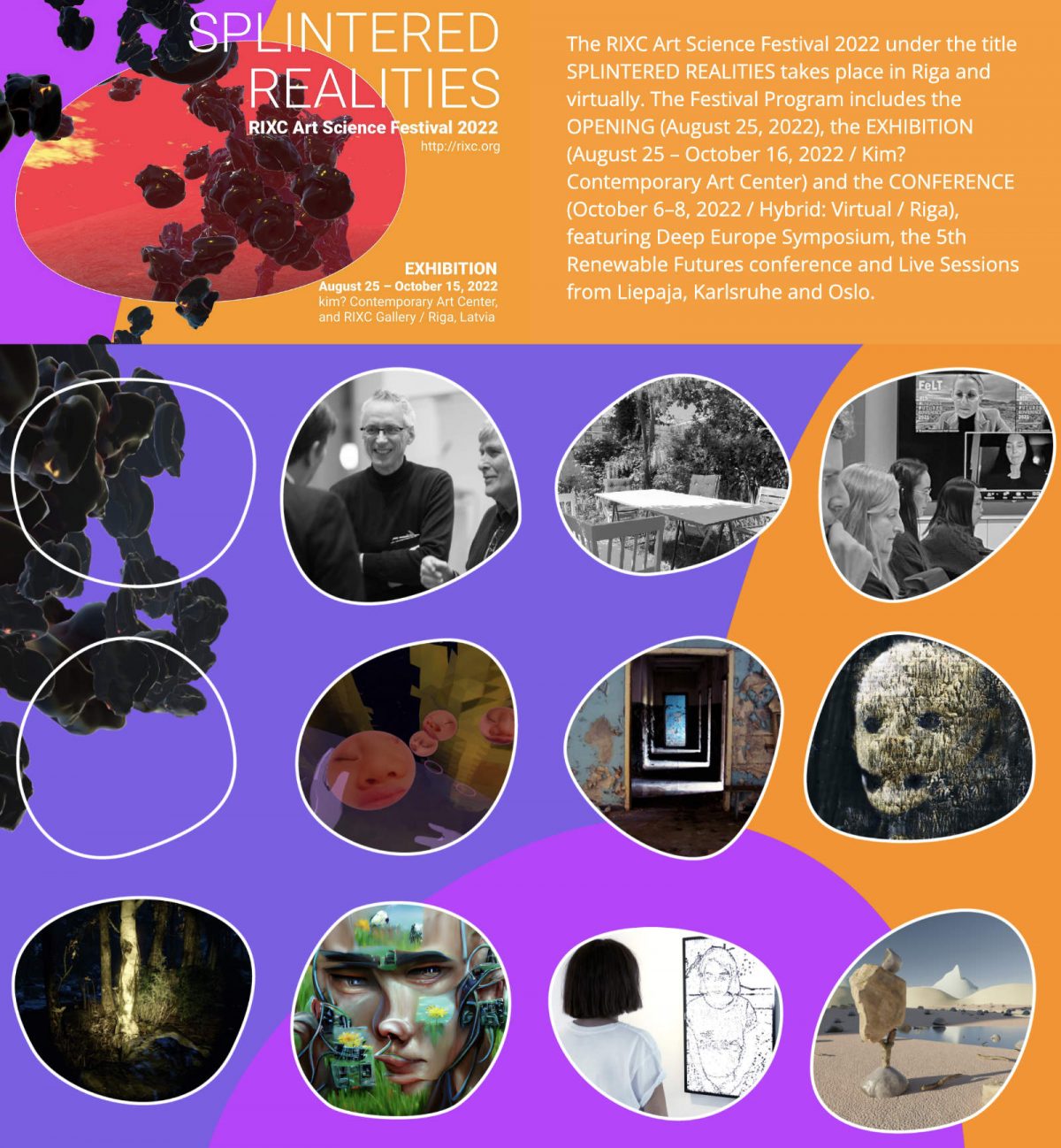Together with Dr. Eva Sommeregger, we will give a lecture at the RIXC Splintered Realities Conference in Riga. Below you will find our abstract.
Topic(s): Techno-Ecological Sensoriums, AI and Biological Systems
Keywords: Digital Landscapes, Polynesian Navigation, Algorithmic
Spatiality
Abstract: To co-exist, and particularly to co-live, with algorithms
and living environments request for new conceptual models of space –
new models that transgress binary oppositions, able to reflect the
multi-layered and interconnected coexistence of the digital and the
physical, as well as the living and non-living beyond their
distinction.
The proposed text discusses the limitations of Western concepts
concerning the design of spaces loaded with digitally supported
practices and data collection. Aware that we can only ever develop a
partial understanding of non-Western thought, we aim to raise the
consciousness of the specificities of the world models constructed by
Polynesian navigation.
Following Haraway’s speculative fabulation method (1), new
architectural models are sought to create new terrain beyond binary
oppositions, reflecting the multi-layered and interconnected
coexistence of the digital and the physical beyond their distinction.
Traditional Western concepts of spatiality, such as those by Euclid,
Descartes or Newton – a source of prejudice in Western, educated,
industrialised, wealthy and democratic thinking (2) – cannot cope with
the multi-layered and intertwined nature of digital and physical
interdependence. To leave behind binary divisions and notions of
unchangeable, pre-existing container space, the theories of Deleuze
and Guattari proved more beneficial. The world does not emerge from
the subject, but processes of subjectivation emerge from the
interactions between body and world (3).
In search of a conception of avatar navigation, interestingly,
non-Western representations can also serve well: Conceptual models of
Polynesian navigation create an animated world in flux around the
traveller (4). During a journey, the moving canoe is the fixed point
of reference, while the islands, flock of birds and fish, currents,
winds and the like pass by the boat along the itinerary. Many of these
Polynesian world model qualities apply to the body when it
communicates or resides in the digital medium: The body is fixed while
the digital architecture moves in the flow. Consequently, the water
metaphor, to be found in data streams and in practices of navigating
or surfing the internet, reminds us that the rules learned from
(human) life on earthly grounds no longer apply to the posthuman world
of data. Instead, humans need architecture, such as a boat or a
digital device, to find their ways in the flowing cosmos.
Furthermore, the shift from discussing spaces as territory
co-inhabited by humans to an undefined realm in which humans have no
place can be retraced in recent architectural discourse: While NOX’s
Freshwater-Pavilion from 1997 (5), for instance, aims at the
interaction of built environment and human audience by making a
certain degree of human habitation visible through state-of-the-art
technology, recent projects like the Google data centres and the like
eerily construct architectures in which humans are seen as
superfluous, declared mere accessories (6). The biggest discrepancy
with their predecessors, such as libraries or teaching institutions,
is their interconnectedness with the digital domains that depend on
them: The physicality of data centres can only provide an index or
indication of the vast digital and data spaces they host. But,
equally, they create an awareness of the enormous physical-spatial
resources required for data storage and the functioning of the
digital, underlining the reciprocal relationships and interconnections
of the digital and the physical that go far beyond binary
categorisation.
In our research, we are looking for a new architectural narrative,
inspired by the animated world model constructed around the Polynesian
canoe, to cope with and counteract the demands made by the
unpredictable digital flow and to contribute another partial
perspective to a non-binary theory of new data landscapes.
References:
(1) Donna Haraway (2013) SF: Science Fiction, Speculative Fabulation,
String Figures, So Far. Ada: A Journal of Gender, New Media, and
Technology, No.3. doi:10.7264/N3KH0K81
(2) Many Minds podcast (2020) WEIRD: Adventures of an Acronym
https://neuroanthropology.net/2010/07/10/we-agree-its-weird-but-is-it-weird-enough/;
retrieved 2022-06-12
(3) Karan August, Zakaria DJebbara, Stavros Kousoulas, Andej Radman
(2020) The Architecture of the Virtual – An Encounter between
Cognitive Neurosciences and Architecture.
(4) Lars Eckstein & Anja Schwarz (2019) The Making of Tupaia’s Map:
A Story of the Extent and Mastery of Polynesian Navigation, Competing
Systems of Wayfinding on James Cook’s Endeavour, and the Invention
of an Ingenious Cartographic System, The Journal of Pacific History,
54:1, 1-95, DOI: 10.1080/00223344.2018.151236
Interestingly, also in the 1990s, architectural theorists have
speculated on inverting the only seemingly fixed relationship between
static, pre-existing space and its (mobile) observer(s) within. See
Lars Spuybroek, Motor Geometry, Architectural Design 68, no. 5/6
(1998): 48–55
(5) Lars Spuybroek (1998) Motor geometry, see above and great example
as we speak about the flow within the water, surfing the web – or the
virtual space.
(6) Rem Koolhaas (2020), Countryside – A Report; The Guardian:
https://www.theguardian.com/artanddesign/2020/feb/11/rem-koolhaas-rural-countryside-the-future-guggenheim;
retrieved 2022-06-12



